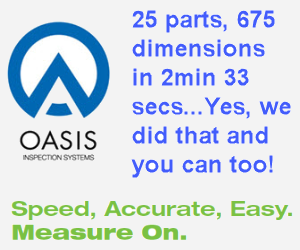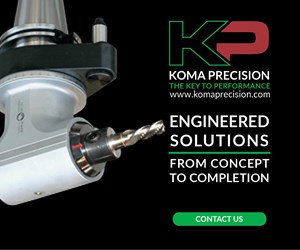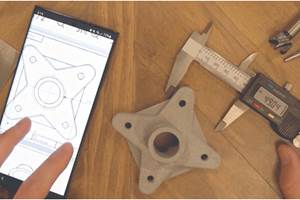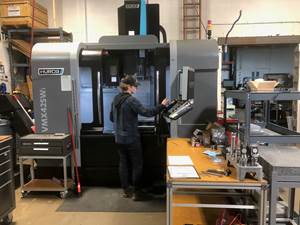7 CNC Parameters You Should Know
Parameters tell the CNC every little detail about the specific machine tool being used, and how all CNC features and functions are to be utilized.
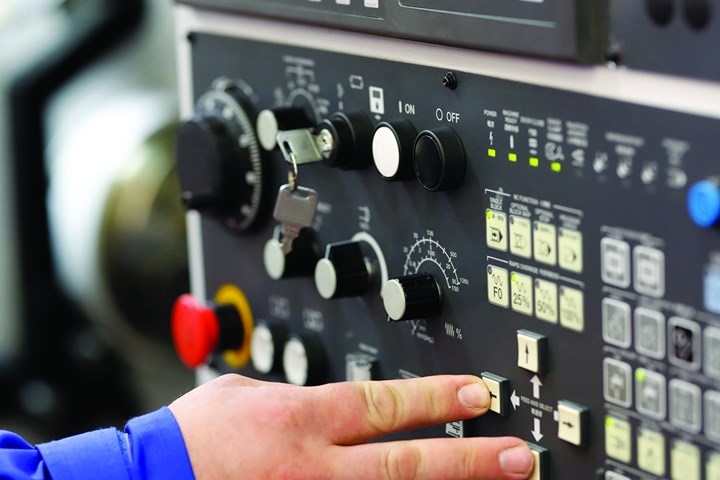
Nearly every CNC-related issue involves a parameter setting.
Parameters specify settings for every CNC feature and function, and there are hundreds, even thousands, for any CNC. When discussing parameters, I always reiterate the importance of backing them up. As the person using the CNC, you are responsible for doing so. Today’s CNCs make it easy to back up to a flash drive, so there is no excuse not to do so. Plus, having your parameter backup can save hours, if not days, in the case of a CNC failure.
Nearly every CNC-related issue involves a parameter setting. Indeed, if the machine is misbehaving in any way, it is likely that an erroneous parameter setting is to blame. There are certain parameters that every CNC user should know related to safety, efficiency and simplifying machine usage. My examples are for FANUC CNCs, but all CNCs have similar parameter settings.
1. Initialized states
Certain G-code modes are automatically instated when you power-on a machine tool. Absolute or incremental (G90/G91); inch or metric (G20/G21); rapid or linear motion (G00/G01); plane selection XY, XZ or YZ (G17/G18/G19); and feed per minute or feed per revolution (G94/G95), among others, are G-code modes that can can be specified through parameters.
2. Canned cycles
Most of these parameters control efficiency. For example, the machining center chip-breaking peck drilling cycle (G73) has a parameter that controls retract amount between pecks. The larger this value, the more time it will take to machine a hole. In similar fashion, the deep-hole pecking cycle has a parameter that controls the clearance amount between pecks. Also, the turning center multiple repetitive cycle for rough turning and boring (G71) has a parameter that controls how far the tool will retract (still feeding) between roughing passes.
3. Data entry
A parameter controls whether a value without a decimal point will be taken as a whole number or with fixed format. If set to a whole number, a coordinate value of 10 in the inch mode will be taken as 10 inches. In fixed-format mode, it will be taken as 0.0010 inch. This can affect program compatibility among machines and operator entries when making sizing adjustments. Another parameter sets the maximum size of a wear offset adjustment. Having this parameter set to 0.02 inch, for example, can help minimize operator entry mistakes.
4. Communications and file loading
Parameters control the methods by which programs can be transferred to and from the CNC as well as the device/media being used. Common choices include a flash drive, memory card, ethernet or serial port. Another parameter determines when the CNC will stop loading programs: at an end of program word (like M30) or the end-of-file delimiter (%).
5. Program protection
Parameters are available to keep specified programs from being modified, deleted and/or displayed. This lets you protect important programs, such as probing programs, sub-programs and custom macros.
6. User-defined G and M codes
Parameters let you specify that a chosen G or M code (like G101 or M87) will execute pre-determined CNC programs. This is important when developing custom macros for canned-cycle applications. Another custom-macro-related parameter lets you control the behavior of single block when executing logic and arithmetic commands: skipping them or executing them one by one.
7. Inch-Metric conversion
A parameter controls what happens when you switch measurement system modes. With one choice, the CNC simply moves the decimal point to the right or left (no true conversion). A value of 10.0000 inches becomes 100.000 millimeters. With the other, all values, including axis positions and offset settings, are converted. A value of 10.0000 inches becomes 254.000 millimeters.
Finding a parameter in question
Knowing (or suspecting) that a parameter affects a given issue is just the beginning of correcting the issue. You must be able to find the parameter in question. Most CNC manufacturers document related parameters in a group, but since there are so many of them, it still can be difficult to find the one that is related to your particular issue.
While you can get a parameter list and start foraging through them, a better way is to consult the documentation (programming manual, operation manual, etc.) that describes the feature that is troubling you. For the peck-drilling cycle parameters, for instance, reference the G73 and G83 descriptions. You will find descriptions of all related parameters.
Programming parameter changes
The most common way to change parameter settings is to do so manually, using the display screen and MDI panel keyboard. But you can program changes for program-related parameters. With the G73 peck drilling retract amount for example, it may be necessary to use a setting of 0.005 inch for one cutting tool in a program and 0.010 inch for another. FANUC CNCs utilize the data setting command (G10) for this purpose.
Related Content
Orthopedic Event Discusses Manufacturing Strategies
At the seminar, representatives from multiple companies discussed strategies for making orthopedic devices accurately and efficiently.
Read MoreFinally, A Comprehensive Software Solution Designed for Small Job Shops
Zel X from Siemens is an integrated software application that consolidates collaboration, design, manufacturing, and operations into a comprehensive, easy-to-use solution. From RFQ to delivery, it’s a more efficient way to handle quotes, manage jobs, make parts, and collaborate with teams of all sizes.
Read MoreFearless Five-Axis Programming Fosters Shop Growth
Reinvestment in automation has spurred KCS Advanced Machining Service’s growth from prototyping to low-and mid-volume parts. The key to its success? A young staff of talented programmers.
Read MoreHow this Job Shop Grew Capacity Without Expanding Footprint
This shop relies on digital solutions to grow their manufacturing business. With this approach, W.A. Pfeiffer has achieved seamless end-to-end connectivity, shorter lead times and increased throughput.
Read MoreRead Next
The Future of High Feed Milling in Modern Manufacturing
Achieve higher metal removal rates and enhanced predictability with ISCAR’s advanced high-feed milling tools — optimized for today’s competitive global market.
Read MoreIMTS 2024: Trends & Takeaways From the Modern Machine Shop Editorial Team
The Modern Machine Shop editorial team highlights their takeaways from IMTS 2024 in a video recap.
Read More
.jpg;width=70;height=70;mode=crop)





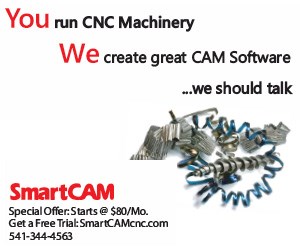
.jpg;maxWidth=300;quality=90)


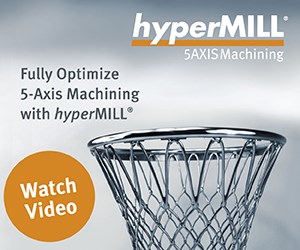
.jpg;maxWidth=300;quality=90)

